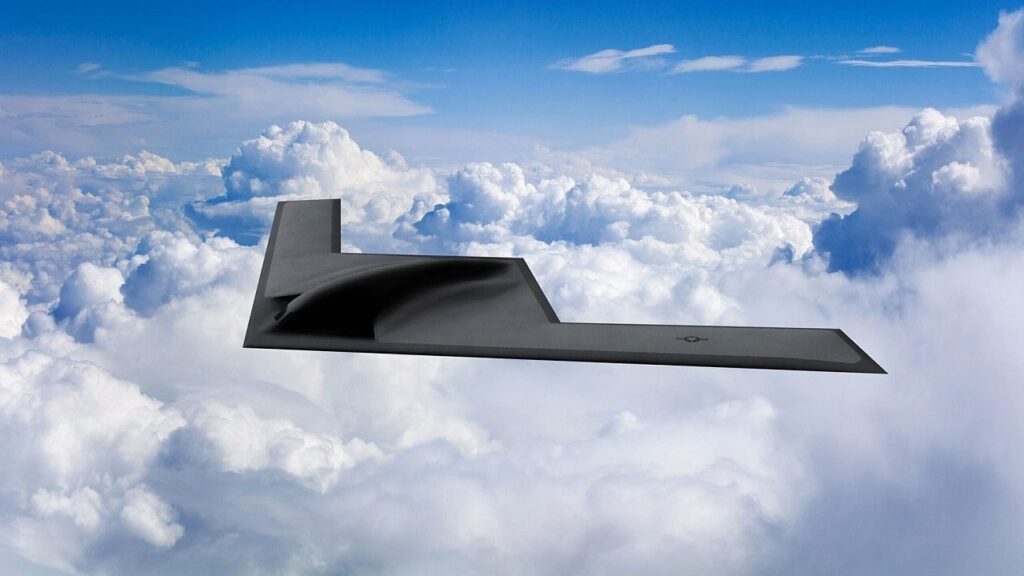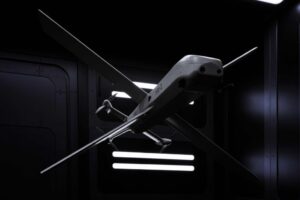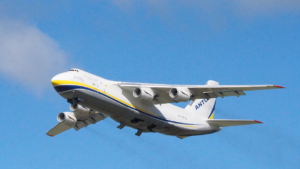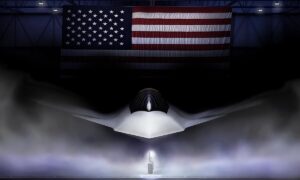A Flying Wing for a Fractured World: The B-21 and the Return of Deterrence Doctrine
In a world teetering between technological marvel and geopolitical dread, the United States has unveiled a weapon that embodies both: the B-21 Raider. Sleek, silent, and shrouded in mystery, it’s more than just the next generation of stealth bombers—it’s a philosophical bet on the future of warfare. Whether it represents the twilight of manned strategic aviation or a rebirth of American airpower remains a question that even Pentagon insiders are still grappling with.
The B-21 is billed as a technological marvel—smaller and stealthier than its predecessor, the B-2 Spirit, yet more capable, more affordable, and crucially, more adaptable. But it’s not just hardware that defines its importance. What makes the Raider so significant is what it symbolizes: a decisive shift in how America prepares for war in an era defined less by gritty ground invasions and more by standoff strikes, cyber feints, and the shadow of nuclear escalation.
A Legacy of Shadows and Silence
You can trace the B-21’s silhouette all the way back to World War II—first sketched by the Horten brothers in Nazi Germany and Jack Northrop in California. These were visionaries obsessed with the flying wing design: a radar-defying form that looked like it belonged in science fiction. Yet political inertia and mechanical instability shelved their dreams for decades.
It wasn’t until the Cold War climaxed that Northrop’s vision was vindicated with the B-2 Spirit, a stunning breakthrough in stealth and survivability. But the B-2 came with baggage: a price tag north of $2 billion per unit, specialized maintenance requirements, and a fleet too small to deter on a global scale. The B-21 is designed to correct those flaws. It’s stealthier, cheaper (at least by Pentagon standards), and built with modularity and sustainment in mind.
Still, you get the sense that the B-21 is not just a weapon—it’s a statement. A declaration that the U.S. is doubling down on air dominance at a time when China and Russia are challenging the very notion of American reach.
Airpower in an Age of Peer Conflict
To understand the Raider’s urgency, look no further than the Indo-Pacific and Eastern Europe. China’s layered anti-access/area denial (A2/AD) systems—integrated with high-altitude drones, radar nets, and surface-to-air missile arrays—are designed precisely to neutralize U.S. bombers before they even approach the target. Russia’s S-500 air defense network promises similar capabilities on its western flank. In this contested environment, traditional bombers are practically obsolete.
Enter the B-21: a platform engineered from day one to slip past the most sophisticated air defenses. We’re talking about digital engineering, adaptive software, and materials that bend radar around their skin. According to the Air Force, it can “hold any target at risk” globally. That’s code for: this thing can kill anywhere—and nobody will see it coming.
What’s troubling, though, is that the B-21 is not entering a vacuum. Deterrence, once maintained by overwhelming conventional superiority, now hinges on survivability in a world where adversaries wield precision long-range missiles, cyber weapons, and rapidly maturing AI targeting systems. If the B-21 fails to evade or suppress those, its utility diminishes dramatically.
The “Affordability” Mirage
On paper, the B-21 is a budget win: capped at $550 million per unit (in 2010 dollars), with 100 aircraft expected to enter service by the 2030s. Compare that to the B-2, which became a budgetary punchline. But let’s not kid ourselves—this program will cost taxpayers over $200 billion over three decades. And it may not be enough.
Senior Pentagon officials have already hinted that 100 Raiders won’t cut it. Analysts suggest 145 or more are needed to meaningfully deter both Russia and China across two hemispheres. In other words, even as the B-21 touts affordability, it risks falling into the same trap as its predecessor: too few, too late, and too brittle for a prolonged or multi-theater conflict.
Manned, Unmanned—or Both?
One of the most underreported aspects of the B-21 is its “optionally manned” capability. In theory, the Raider can fly without a pilot—allowing riskier missions, longer endurance, and AI-driven decision-making. That’s a tantalizing prospect, especially as drone swarms, satellite jamming, and hypersonic missiles evolve faster than any Pentagon procurement cycle.
But here’s the catch: the unmanned feature hasn’t been demonstrated. And with every year that passes, questions mount. Is this truly the last manned bomber America will build—or just a halfway step toward a more automated, decentralized future of strike warfare?
The answer may lie less in technology than in doctrine. The U.S. military still clings to human-in-the-loop controls for nuclear weapons, both for safety and political accountability. For now, at least, the Raider is a human-driven machine. But that may not hold true for long.
Strategic Symbolism and the New Cold War
The B-21 isn’t just a bomber; it’s a psychological weapon. For U.S. allies, especially those in NATO and the Pacific Rim, it’s a signal that Washington still intends to be the world’s premier security guarantor. For adversaries, it’s a message that sanctuary is a myth.
Its very existence forces competitors to spend billions in response—money that might otherwise go to domestic development. This is classic arms race logic: provoke your opponent into strategic overreach. Yet it’s also a delicate dance. The more invulnerable the Raider appears, the more tempting it becomes as a first-strike option. And in an era of nuclear brinkmanship, that’s a dangerous perception to cultivate.
The Risk of Overreach
There’s a darker undercurrent to all this. By relying so heavily on technological supremacy—stealth, speed, precision—the U.S. risks forgetting the lessons of attrition warfare. What happens when hundreds of cheaper, less advanced drones saturate the sky? When base infrastructure gets wiped out before the first Raider takes off? When quantum radar or AI tracking render stealth moot?
Frankly, betting on one exquisite platform to win the wars of the future is a high-stakes gamble. The B-21 may be the crown jewel of American airpower, but it could also be a brittle one if not paired with the redundancy, resilience, and broader force structure needed to sustain combat operations in a prolonged conflict.
Conclusion: Breakthrough or Epitaph?
In the final analysis, the B-21 Raider is a paradox. It represents the pinnacle of current aerospace engineering—an elegant synthesis of form and function, stealth and speed. Yet it may also be the last of its kind: a manned, billion-dollar bomber designed in an age quickly being reshaped by autonomy, swarming drones, and non-kinetic warfare.
The Raider isn’t just a machine. It’s a mirror—reflecting both the enduring belief in American airpower and the creeping anxiety that such beliefs may soon be outpaced by history. Whether it becomes a linchpin of 21st-century deterrence or a cautionary tale of military overreach remains to be seen.
But for now, it soars—silent, sharp, and shrouded in promise.



